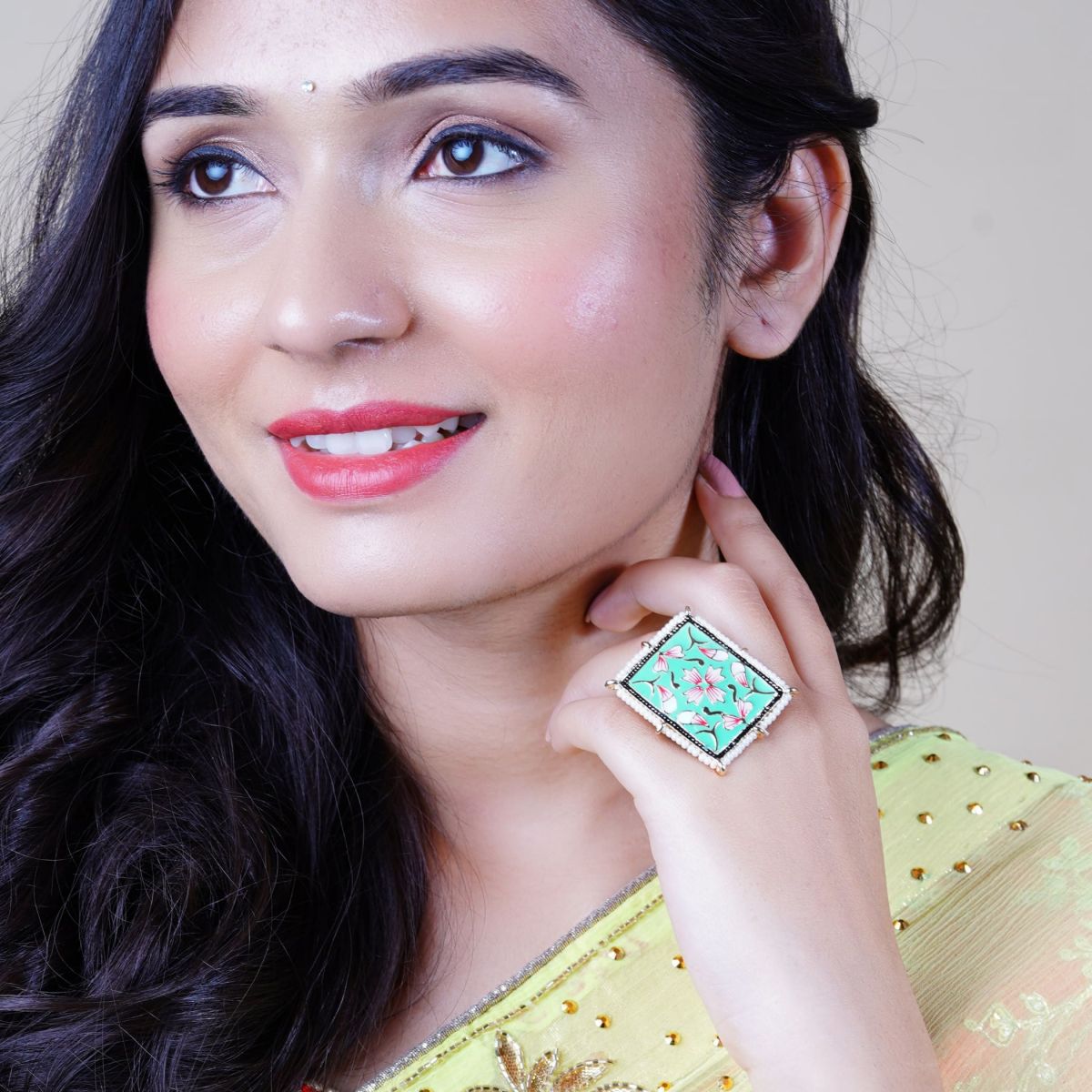Indian jewelry isn't just an accessory; it's a storied artifact that carries the weight of centuries, embodying the essence of art, culture, and devotion. For fashion enthusiasts, jewelry collectors, and cultural aficionados, understanding the profound legacy of Indian jewelry offers a window into the soul of one of the world's oldest civilizations. This blog post seeks to unwrap the rich heritage of Indian jewelry, highlighting its historical significance, popular styles, and the intertwining of tradition with contemporary trends.
Historical Significance
The Ancient Beginnings
The love affair between Indian civilization and jewelry crafting dates back to the Indus Valley Civilization (around 2500 BC), evidencing an advanced understanding of metallurgy and craftsmanship. Jewelry in India transcends mere decoration—it weaves into the fabric of daily life, holding profound cultural, religious, and social significance. Ostentatiously, it has been a marker of status and an amulet imbued with prayers and blessings.
The Mughal Influence
The entry of Mughal rulers marked a paradigm shift in Indian jewelry designs. Their penchant for intricate artistry led to the introduction of enameling, inlay work, and sophisticated stone setting techniques, enriching the tradition of Indian jewelry making. These practices have seeped deeply into the craft, enriching it with a finesse that continues to dazzle the world.
A Land of Diverse Traditions
Travel across India, and you'll encounter a kaleidoscope of styles, each narrating the local myths, customs, and heritage. From the heavy, intricate designs of the South to the delicate filigree work of the East, regional diversity flourishes, making Indian jewelry a mosaic of the country's cultural wealth.
Popular Styles of Indian Jewelry
Kundan Jewelry
Kundan jewelry, known for its intricate craftsmanship, is a testament to the skilled artisans who pour their souls into creating these masterpieces. The process involves carefully setting polished, uncut gemstones into gold, resulting in exquisite pieces that radiate reality.
Meenakari Jewelry
Meenakari, the art of enameling, brings a riot of colors to metal surfaces. It's a technique where metal is adorned with vibrant colors in intricate designs. The beauty of Meenakari jewelry lies in its versatility, thriving in both traditional and modern contexts.
Temple Jewelry
Originally crafted to adorn the gods and goddesses in temples, temple jewelry, characterized by its heavy, ornate designs, has found its way into the trousseaus of brides seeking a touch of divinity. It predominantly features motifs of deities, flowers, and animals, intricately wrought in gold.
Trending Styles in Indian Jewelry
While tradition forms the backbone of Indian jewelry, contemporary trends have woven their threads through, giving birth to pieces that resonate with modern sensibilities yet retain their timeless allure. Today, designers are experimenting with lightweight, minimalistic designs without straying from the essence of tradition. Fusion pieces that blend western elements with traditional Indian motifs are gaining traction, offering wearers the best of both worlds.
Cultural Significance in Indian Jewelry
Indian jewelry is heavily steeped in symbolism and rituals. From the "mangalsutra," symbolizing marriage, to the "payal," chiming with every step, each piece carries a meaning, a memory. Beyond adornment, jewelry is a talisman, a keeper of stories and traditions passed down through generations.
Rituals and Symbolism
Every piece of Indian jewelry has a story, a purpose beyond beauty. The "nath" (Indian nose ring) signifies marital status and is a staple in wedding ceremonies. The "tikka jewellary" ornament, worn on the forehead, is said to protect and empower its wearer. These elements are not just decorative—they're deeply symbolic, infused with centuries of beliefs and practices.
Status and Beliefs
In India, jewelry often denotes one's social status and adherence to cultural norms. It's a visible marker of one’s place in the societal hierarchy and a testament to personal beliefs and values. This tradition of wearing jewelry as a sign of status and belief continues unabated, reflecting the enduring link between the past and the present.
Conclusion
The diversity and cultural significance of Indian jewelry make it much more than mere trinkets. They are lifelines to the past, bearers of traditions, and carriers of beauty that transcends time. Whether it's the timeless Kundan, vibrant Meenakari, or divine Temple jewelry, each style is a testament to India’s rich heritage and craftsmanship.
For those enchanted by the allure of Indian jewelry, understanding its roots and significance adds layers to its beauty, transforming every piece into a narrative waiting to be unraveled. As modern trends weave into the fabric of traditional Indian jewelry, this ancient art form continues to evolve, promising endless enchantment for fashion enthusiasts, jewelry collectors, and cultural aficionados alike.
Lovenspire offers a huge collection of Indian jewelry, from intricately designed necklaces and earrings to statement-making bangles and rings. But before diving into the world of Indian jewelry, let's take a journey back in time to discover its origins and cultural significance.
India has been renowned for its exquisite jewelry since ancient times. The Indus Valley Civilization (3300–1300 BCE) is credited with being one of the first civilizations to create jewelry using precious metals such as gold, silver, and copper. Over time, different regions within India developed unique styles and techniques that were influenced by their respective cultures, traditions, and beliefs.
One of the most prominent forms of Indian jewelry is Kundan, which originated during the Mughal era in Rajasthan. This style involves setting uncut diamonds or precious








